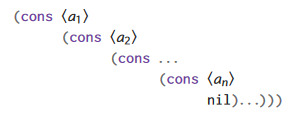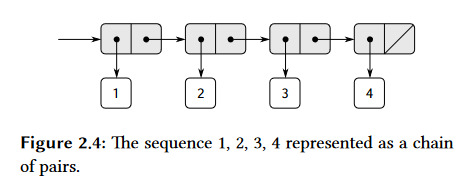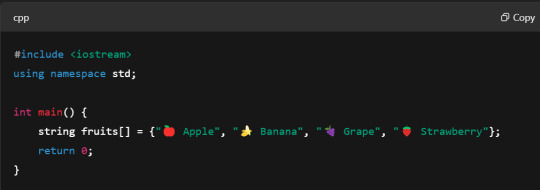#Data Structures in Computer Science
Explore tagged Tumblr posts
Text
Importance of Data Structures in Computer Science

Introduction
The importance of data structures in computer science lies in their role in the efficient storage and management of data. Understanding data structures is crucial for both new and expert programmers to write optimized and scalable code. TCCI-Tririd Computer Coaching Institute emphasizes the essential nature of learning data structures to build a strong foundation in programming and problem-solving skills.
What Are Data Structures?
A data structure is a way of organizing and storing data in such a way that operations on the data can be performed in an efficient manner. These data structures define ways through which data is accessed, modified, and manipulated in a computer system.
Types of Data Structures
1. Linear Data Structures
Are:
Arrays
Linked Lists
Stacks
Queues
2. Non-Linear Data Structures
Trees (Binary Trees, Binary Search Trees, AVL Trees, etc.)
Graphs (Directed, Undirected, Weighted, etc.)
Hash Tables
Why Are Data Structures Important in Computer Science?
1. Efficient Data Management
Good data structures help organize and quickly retrieve data, which improves performance and decreases execution time.
2. Optimized Algorithm Performance
Data structures play a key role in any algorithm. The choice of a data structure directly affects the speed and efficiency of an algorithm.
3. Scalability
Scalable applications that can accommodate loads of data without degrading in performance would require optimized structures.
4. Memory Optimization
An appropriate data structure ensures that memory is utilized optimally so that there is no wastage.
Real-Time Applications of Data Structures
1. Database Management Systems
Databases use B-Trees and Hash Tables for indexing data and efficient searching of data.
2. Operating Systems
Operating systems use queues for process scheduling and stacks for memory management.
3. Artificial Intelligence and Machine Learning
Most tree and network structures are based on graphs, heavily relied upon by AI and machine learning algorithms.
4. Web Development
Hash tables and graphs are often used for efficient searching, sorting, and recommendation systems on websites.
Data Structures Course at TCCI-Tririd Computer Coaching Institute
At TCCI-Tririd Computer Coaching Institute, we provide high-grade data structures training for both students and professionals. The courses offered include:
Basic concepts of data structures
Extensive hands-on coding sessions
Examples of real-life applications
Interview and competitive programming preparations
Conclusion
Data structures are a backbone of computer science and therefore are mandatory for anyone who is interested in pursuing software development. Getting to learn data structures from TCCI-Tririd Computer Coaching Institute would prepare you with the skills needed to solve difficult problems efficiently and develop durable applications.
Location: Bopal & Iskon-Ambli Ahmedabad, Gujarat
Call now on +91 9825618292
Get information from: tccicomputercoaching.wordpress.com
FAQ
1: Why learn data structures?
Learning data structures improves your coding efficiency and propelling abilities making you a better programmer.
2: What is the best way to learn data structures for the practice?
If you are looking for websites to practice coding problems on, check out LeetCode, CodeChef, and HackerRank that'll help you master your data structures.
3: Data Structures- Are they really important to job interviews?
Indeed, data structures and algorithms are generally discussed in most technical job interviews.
4: Do I need programming skills to learn Data Structures?
It is best to have at least a minimal programming knowledge before you jump into data structures but TCCI-Tririd Computer Coaching Institute offers various entry point courses for getting into these things.
5: How long does it take to learn data structures?
One can build a good grasp on data structures within 2-3 months if consistently practiced.
#Best computer courses near me#Data Structures in Computer Science#Diploma Tuition Classes in Ahmedabad#TCCI - Tririd Computer Coaching Institute#Top Computer Institute Iskcon-Ambli Road Ahmedabad
0 notes
Text
so I'm reading Gankra's "Learn Rust With Entirely Too Many Linked Lists" and the introduction feels like
STOP USING LINKED LISTS
DATA ELEMENTS WERE NOT SUPPOSED TO BE GIVEN POINTERS
YEARS OF COMPUTER SCIENCE yet NO REAL-WORLD USE FOUND for using anything other than Vec
Want to add and remove elements from the front and back just for a laugh? We have a tool for that: It's called "VecDeq"
"It might take a long time to look at any element but I'll make it up with all the merges, inserts, and splits I'll be doing" - Statements dreamed up by the utterly Deranged
LOOK at what Functional Programmers have been demanding your Respect for all this time, with all the LISP machines & tape readers we built for them (This is REAL Computer Science, done by REAL Computer Scientists)


???????????
"Hello I would like element.next.next.next.next.next.next.next.next please"
They have played us for absolute fools
170 notes
·
View notes
Text

August 7, 2023
Uni 'A' has begun! Today we were introduced to data structures, and the teacher's accent was so heavy I zoned out too many times T-T
Planning on doing a pre-read before her class so it's more of a recall session rather than learning it new.

Things I did today:
Recalled basics of C programming on a sheet of paper
Light reading on introduction to data structures
Created a new template for my digital planner

@studaxy and I had a very productive 40 minutes :D
The days ahead look bright :)
🎧I Know Places - Taylor Swift
#dailyfoxposts#studyblr#codeblr#coding#studyspo#study#note taking#computer science#data structures#university
104 notes
·
View notes
Text
Mastering Linked Lists: Beginner's Guide
Hey Tumblr friends 👋
After learning about Arrays, it's time to level up! Today we’re diving into Linked Lists — another fundamental building block of coding! 🧱✨
So... What is a Linked List? 🤔
Imagine a treasure hunt 🗺️:
You find a clue ➡️ it points you to the next clue ➡️ and so on.
That's how a Linked List works!
🔗 Each element (Node) holds data and a pointer to the next Node.
It looks something like this: [data | next] -> [data | next] -> [data | next] -> NULL
Why Use a Linked List? 🌈
��� Dynamic size (no need to pre-define size like arrays!) ✅ Easy insertions and deletions ✨ ✅ Great for building stacks, queues, and graphs later!
❌ Slower to access elements (you can't jump straight to an item like arrays).
Basic Structure of a Linked List Node 🛠️

data -> stores the actual value
next -> points to the next node
📚 CRUD Operations on Linked Lists
Let’s build simple CRUD functions for a singly linked list in C++! (🚀 CRUD = Create, Read, Update, Delete)
Create (Insert Nodes)

Read (Display the list)

Update (Change a Node’s Value)

Delete (Remove a Node)

🌟 Final Thoughts
🔗 Linked Lists may look tricky at first, but once you master them, you’ll be ready to understand more powerful structures like Stacks, Queues, and even Graphs! 🚀
🌱 Mini Challenge:
Build your own linked list of your favorite songs 🎶
Practice inserting, updating, and deleting songs!
If you loved this explainer, give a follow and let's keep leveling up together! 💬✨ Happy coding, coder fam! 💻🌈 For more resources and help join our discord server
4 notes
·
View notes
Text
The Set: *names their members and ranks after mathematical terms for groupings of stuff because they're a buncha nerds*
Me, a computer science degree holder who has somehow been transported into the Mistborn Era 2 universe: "Hello, friends. It is I... Linked List" (dun dun dun!!)
Me (cont.): "These are my assistants, Stack and Heap. And here is my somewhat unordered friend, Hashmap."
(this is an infiltration and I imagine that Wayne would be Hashmap)
(the members of the Set would just look at us in utter confusion)
(I would be rolling on the floor laughing)
#mistborn era 2#bad computer science jokes#data structures (freeform)#wax and wayne#mistborn#I've only read to the end of Bands of Mourning so I hope this joke still makes sense#bands of mourning
2 notes
·
View notes
Text
(practicing dsa) is somebody gonna match my leet
#dsa#data structures and algorithms#leetcode#😀#recently i’ve just been spiraling on leet code#computer science
10 notes
·
View notes
Text
What Dijkstra's two-stack algorithm does to Left parenthesis of Infix expression is everyone does to me
.
.
.
IGNORE 🤡
7 notes
·
View notes
Text
Exploring Quantum Leap Sort: A Conceptual Dive into Probabilistic Sorting Created Using AI
In the vast realm of sorting algorithms, where QuickSort, MergeSort, and HeapSort reign supreme, introducing a completely new approach is no small feat. Today, we’ll delve into a purely theoretical concept—Quantum Leap Sort—an imaginative algorithm created using AI that draws inspiration from quantum mechanics and probabilistic computing. While not practical for real-world use, this novel…
#AI#algorithm#amazon#chatgpt#coding#computer science#css#data-structures#DSA#engineering#google#heapsort#insertionsort#javascript#mergesort#new#programming#python#quicksort#radixsort#sorting#tech#tesla#trending#wipro
2 notes
·
View notes
Text
The Digital Brain - Unlocking the Power of Computer Science

Dive into the world of technology with a comprehensive Computer Science course designed to equip you with real-world skills and foundational knowledge. This course covers everything from programming fundamentals, data structures, and algorithms to computer networks, database management, and software development principles
Visit Attitude Academy
📚 Learn Computer Science : Attitude Academy
📍 Visit Us: Yamuna Vihar | Uttam Nagar
📞 Call: +91 9654382235
🌐 Website: www.attitudetallyacademy.com
📩 Email: [email protected]
📸 Follow us on: attitudeacademy4u
.
#computer science course in uttam nagar#computer science training in yamuna vihar#data structures course#database management course#software development training#software development course
0 notes
Text
They just release a new data structure called kinked list
#inspired by linked list typo from my google search today#computer science#programming#linked list#shit post#text post#data structures
0 notes
Text
Fixing stuff that was never meant to be broken
I am cs student, gradating in a month. I got no job yet, haven't been consistent with DSA, and learning things. My goals? barely started. So I decided to use this blog as my accountability tracker(?)
What I'll post about:
(Weekly or twice a week)
My DSA struggles
Research papers I read
Rants, reflections and maybe some new things I did that day which turned out to be productive :)
No idea if this will work, but I'll keep on trying, one day or the other.
Would love to interact with my fellow people who are stuck, struggling like me, or trying to improving their career or just grinding.
I have wasted a lot of my time as a student. I am now regretting, but I still am young, I think I'll take my chances.
1 note
·
View note
Text
Mastering Tree Data Structures: A Comprehensive Guide
Introduction
In the ever-evolving landscape of computer science, mastering tree data structures is not just an option—it's a necessity. These hierarchical data structures serve as the backbone of countless algorithms and applications, making them essential knowledge for anyone pursuing a career in technology. In this comprehensive guide, we'll delve into the fundamentals and strategies for achieving tree data structures mastery.
Understanding Tree Data Fundamentals:
Trees are hierarchical data structures consisting of nodes connected by edges.
Each node contains data and may have zero or more child nodes, with one node designated as the root.
Fundamentals also include concepts like leaves (nodes with no children) and branches (connections between nodes).
Exploring Tree Data Structure Mastery:
Mastery of tree data structures involves understanding different types, such as binary trees and binary search trees (BST).
Binary trees have at most two children per node, while BSTs maintain an ordered structure for efficient searching.
Advanced techniques include balancing methods like AVL trees and Red-Black trees to ensure optimal performance.
Enrolling in Courses for Tree Data Structure Mastery:
Courses offer structured learning environments with comprehensive curriculums covering tree data fundamentals and advanced techniques.
Experienced instructors guide students through hands-on exercises and projects, solidifying their understanding of tree data structures.
Benefits of Training Centers for Tree Data Mastery:
Training centers provide immersive learning experiences, allowing students to interact with peers and instructors.
Small class sizes ensure personalized attention, fostering a supportive learning environment.
Optimizing Your Search for Tree Data Courses:
Utilize search engines and online directories to find courses using keywords like "tree data structure course" or "tree data training institute."
Consider factors such as course content, instructor expertise, and student reviews when evaluating options.
Building a Strong Foundation for Your Career:
Mastery of tree data structures opens doors to diverse career opportunities in software development, data analysis, and artificial intelligence.
Employers value candidates with strong problem-solving skills and a deep understanding of data structures.
Continuous Learning and Growth in Tree Data Mastery:
Stay updated with the latest advancements in tree data structures by attending workshops, conferences, and online forums.
Continuously honing your skills ensures you remain competitive in the rapidly evolving tech industry.
In conclusion,
Mastering tree data structures is a journey that requires dedication and perseverance. By understanding the tree data fundamentals, enrolling in courses or training centers, and embracing continuous learning, you can unlock the full potential of tree data structures and embark on a successful career in computer science. So, dive into the comprehensive guide to mastering tree data structures and pave the way for a bright future in technology.
1 note
·
View note
Text
🌟 Understanding Arrays: A Beginner’s Deep Dive! 🌟
Hey Tumblr friends 👋
Today I want to break down something super important if you're getting into coding: Arrays. (Yes, those weird-looking brackets you've probably seen in code snippets? Let’s talk about them.)
So... What Exactly Is an Array? 🤔
Imagine you have a bunch of favorite songs you want to save. Instead of creating a new playlist for each song (chaotic!), you put them all into one single playlist.
That playlist? That’s what an Array is in programming! 🎶✨
An array is basically a container where you can store multiple values together under a single name.
Instead of doing this:

You can just do:

Why Are Arrays Useful? 🌈
✅ You can group related data together. ✅ You can loop through them easily. ✅ You can dynamically access or update data. ✅ You keep your code clean and organized. (No messy variables 👀)
How Do You Create an Array? ✨
Here's a simple array:

Or create an empty array first (you must specify size in C++):

Note: C++ arrays have a fixed size once declared!
How Do You Access Items in an Array? 🔎
Arrays are zero-indexed. That means the first element is at position 0.
Example:

Changing Stuff in an Array 🛠️
You can update an item like this:

Looping Through an Array 🔄
Instead of writing:

Use a loop:

Or a range-based for loop (cleaner!):

Some Cool Things You Can Do With Arrays 🚀
In C++ you don't have built-in methods like push, pop, etc. for raw arrays, but you can use vectors (dynamic arrays)! Example with vector:

Quick Tip: Arrays Can Store Anything 🤯
You can store numbers, booleans, objects (structures/classes), and even arrays inside arrays (multidimensional arrays).
Example:

Real-World Example 🌍
A To-Do list:

Output:

👏 See how clean and readable that is compared to hardcoding every single task?
🌟 Final Thoughts
Arrays are the foundation of so much you'll do in coding — from simple projects to complex apps. Master them early, and you'll thank yourself later!
🌱 Start practicing:
Make a list of your favorite movies
Your favorite foods
Songs you love
...all in an array!
If you liked this C++ explainer, let’s connect! 💬✨ Happy coding, coder fam! 💻🌈
2 notes
·
View notes
Text
Essential Tools for Programmers: A Guide to Data Structures in Action

Introduction:
In the vast landscape of programming, understanding data structures is akin to wielding a powerful toolkit. Data structures serve as the building blocks for efficient algorithms and form the backbone of software development. In this guide, we'll delve into the practical application of data structures, exploring their role in programming and their significance in computer science basics.
Data Structures in Practice:
Data structures are the fundamental constructs used to organize and manipulate data efficiently. From arrays to trees, each data structure offers unique advantages suited to different tasks. Let's take a closer look at some commonly used data structures and their practical applications:
Arrays: Arrays provide a contiguous block of memory to store elements of the same data type. They are efficient for accessing elements by index and are widely used in tasks requiring sequential data storage, such as lists and matrices.
Linked Lists: Linked lists consist of nodes where each node contains a data element and a reference to the next node. They are dynamic in size and allow for efficient insertion and deletion operations, making them ideal for applications where frequent data modifications are required.
Stacks and Queues: Stacks follow the Last In, First Out (LIFO) principle, while queues adhere to the First In, First Out (FIFO) principle. These data structures are commonly used in algorithms involving recursion, backtracking, and resource allocation.
Trees: Trees are hierarchical data structures composed of nodes connected by edges. They are versatile and find applications in various domains, including hierarchical data representation, sorting, and searching.
Graphs: Graphs consist of vertices and edges that connect them. They are used to model relationships between objects and solve complex problems such as network routing, social network analysis, and pathfinding algorithms.
Computer Science Basics:
Understanding data structures is essential for grasping core concepts in computer science. Here's how data structures tie into foundational principles:
Efficiency: Choosing the right data structure can significantly impact the efficiency of algorithms. For instance, selecting a suitable data structure can lead to faster search, insertion, and deletion operations, thus optimizing program performance.
Problem-Solving: Proficiency in data structures enables programmers to approach problem-solving systematically. By leveraging the appropriate data structure, programmers can devise elegant solutions to a wide range of computational problems.
Algorithm Design: Data structures serve as the building blocks for algorithm design. Mastery of data structures empowers programmers to design algorithms that are not only correct but also efficient and scalable.
Memory Management: Understanding how data structures are implemented in memory is crucial for effective memory management. This knowledge enables programmers to optimize memory usage and avoid common pitfalls such as memory leaks and buffer overflows.
Conclusion:
In the world of programming, proficiency in data structures is indispensable. By mastering in data structures in practice, programmers can write efficient code, design elegant algorithms, and tackle complex computational problems with confidence. As you embark on your programming journey, remember that data structures are not just abstract concepts—they are the essential tools that empower you to turn your ideas into reality.
0 notes
Text
I love hash tables.
0 notes